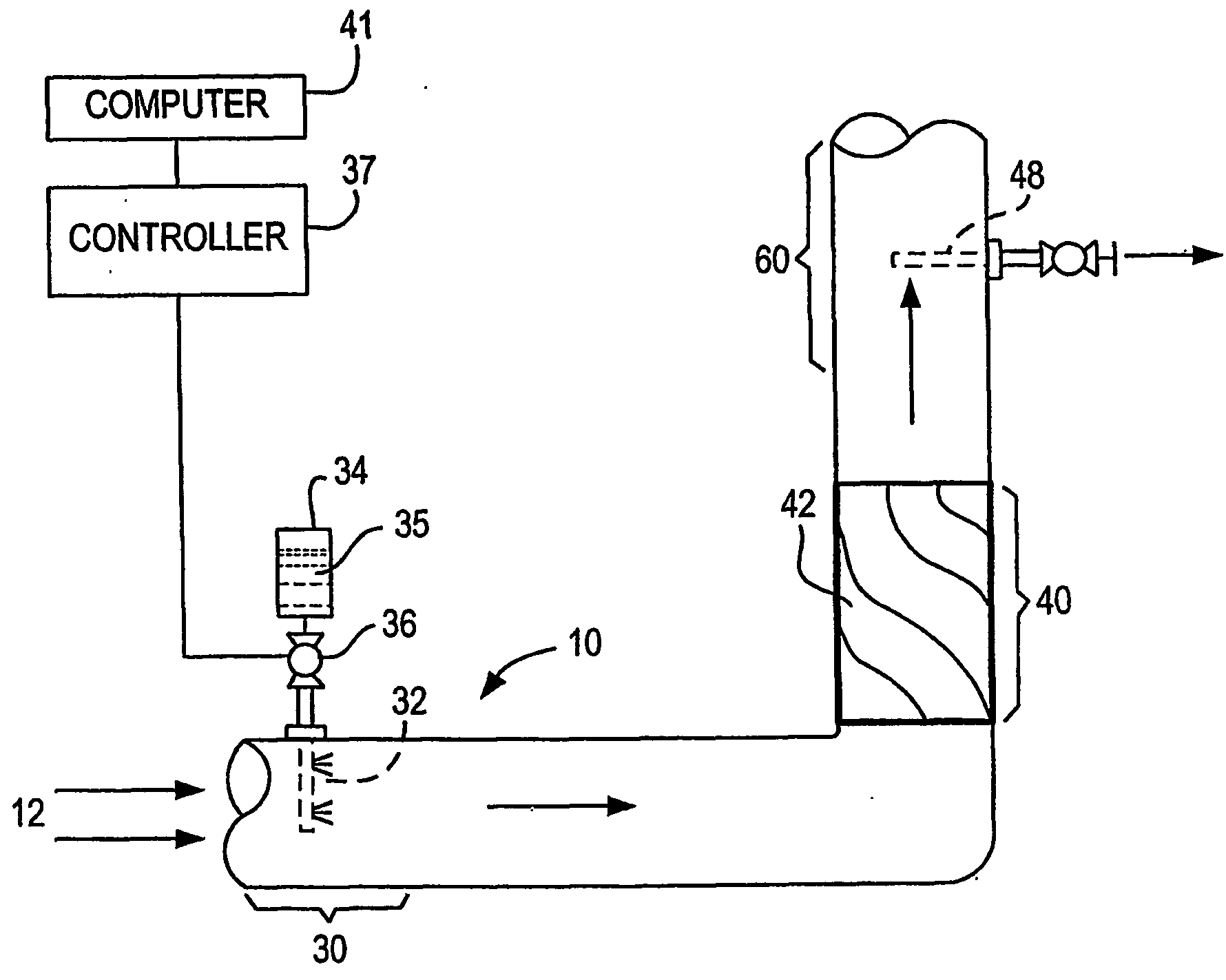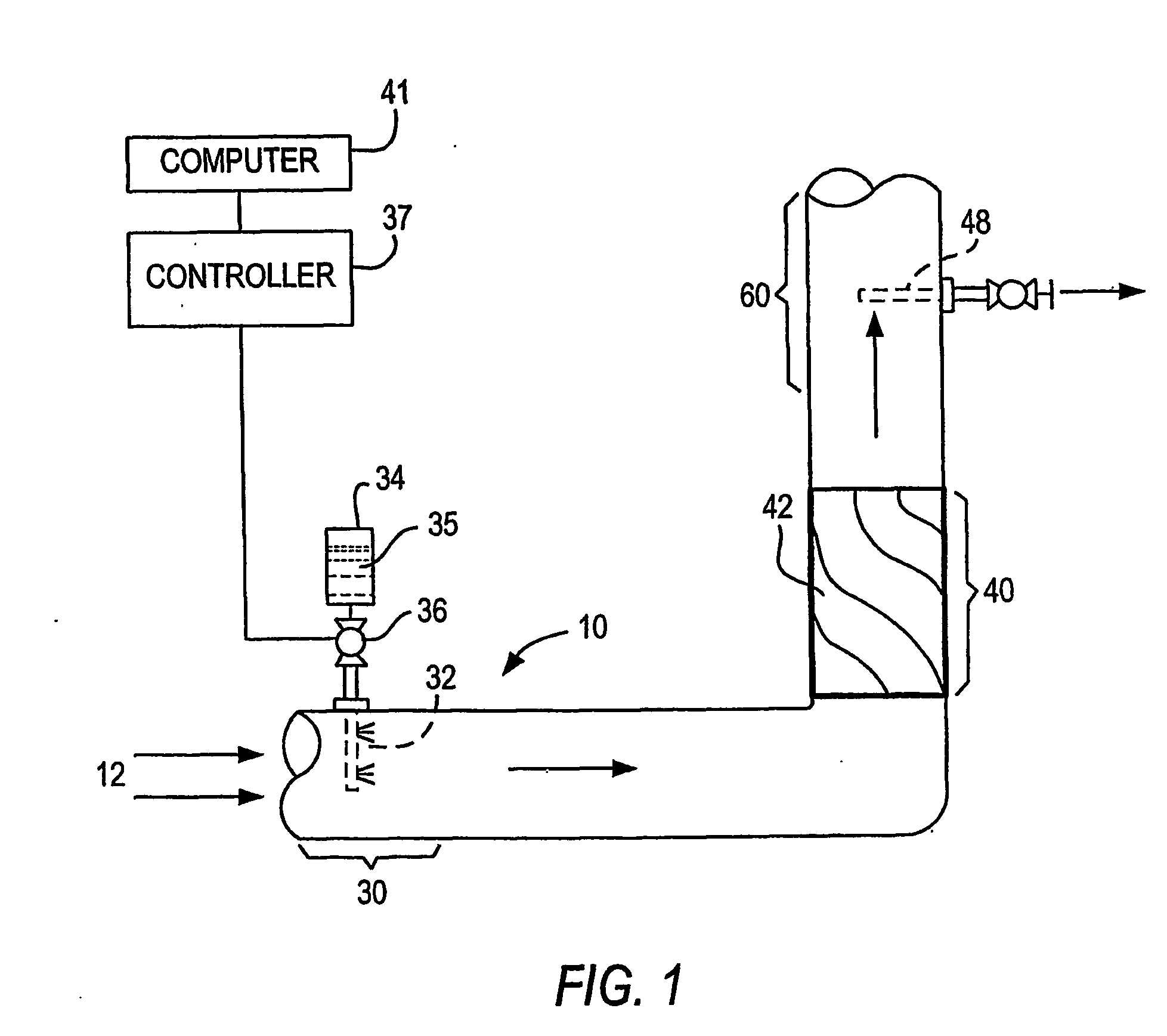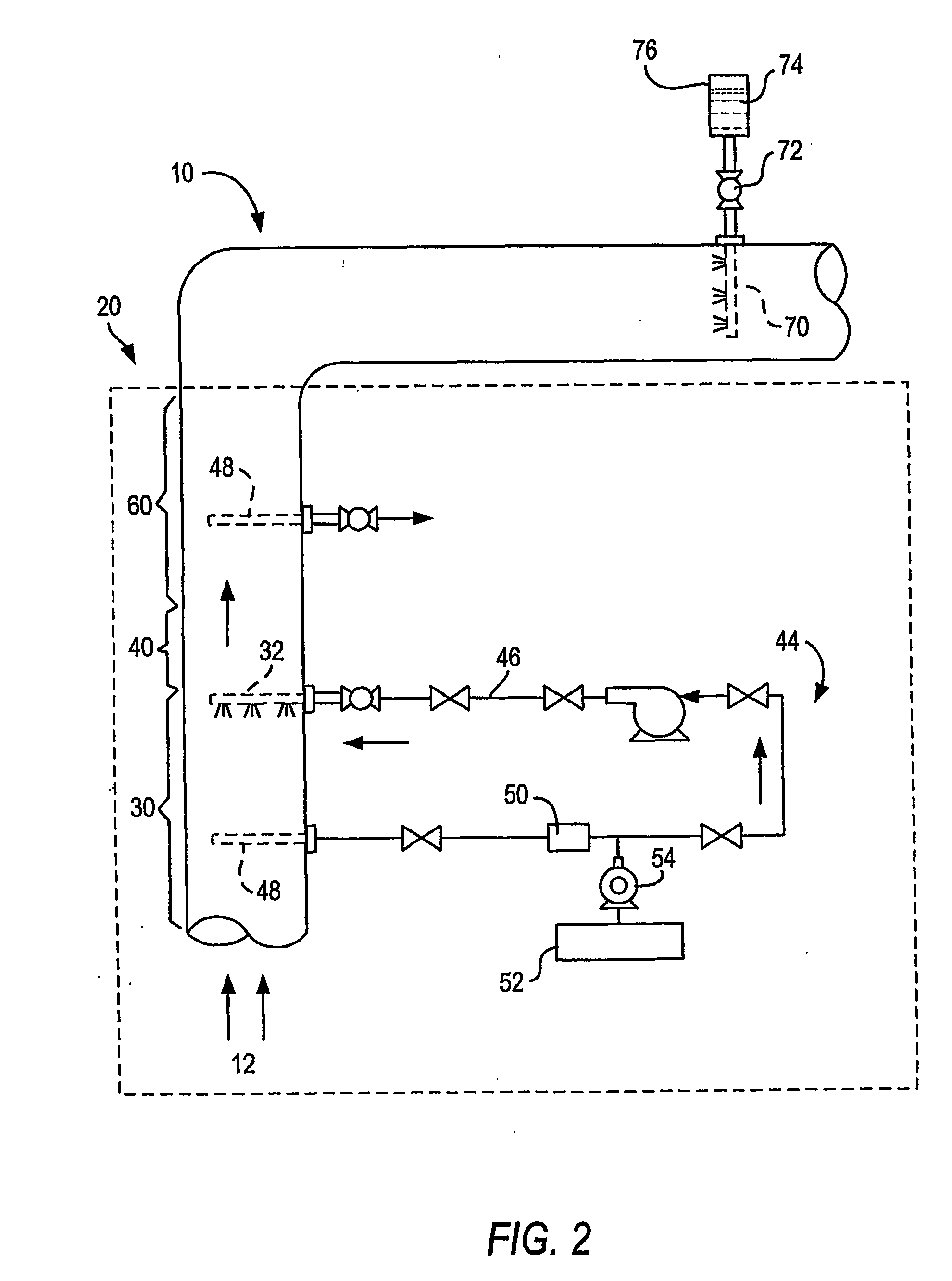Multi-phase fluid sampling method and apparatus
a multi-phase fluid and sampling method technology, applied in the direction of instruments, withdrawing sample devices, material analysis, etc., can solve the problems of significant difficulties in obtaining truly representative samples, inability to accurately measure the density of the stream, and inability to obtain truly representative samples, etc., to achieve accurate and economical accurate and economical, and reliable and accurate multi-phase fluid flow measurement
- Summary
- Abstract
- Description
- Claims
- Application Information
AI Technical Summary
Benefits of technology
Problems solved by technology
Method used
Image
Examples
Embodiment Construction
[0067] Referring to FIG. 1, there is shown a portion of a gas transmission pipeline 10 that has been provided with one embodiment of the apparatus 20 of the invention. A surfactant injection zone 30 includes one or more liquid surfactant injection jets, quills or nozzles 32 in fluid communication with surfactant storage containers 34 and metering pumps 36. The amount of surfactant 35 to be added to the fluid stream 12 is determined based on a number of parameters, including the operating pressure and temperature of the fluid, the type and approximate amount of hydrocarbon liquids and water present.
[0068] The metering pumps 36 can be manually activated. In a preferred embodiment, a controller 37 directed by a programmed general purpose computer 41 actuates the flow of surfactant through the nozzles 32. These variables will be generally known to the operator of the pipeline and one of ordinary skill in the art will be able to determine the type and rate of addition of the one or more...
PUM
 Login to View More
Login to View More Abstract
Description
Claims
Application Information
 Login to View More
Login to View More - R&D
- Intellectual Property
- Life Sciences
- Materials
- Tech Scout
- Unparalleled Data Quality
- Higher Quality Content
- 60% Fewer Hallucinations
Browse by: Latest US Patents, China's latest patents, Technical Efficacy Thesaurus, Application Domain, Technology Topic, Popular Technical Reports.
© 2025 PatSnap. All rights reserved.Legal|Privacy policy|Modern Slavery Act Transparency Statement|Sitemap|About US| Contact US: help@patsnap.com



